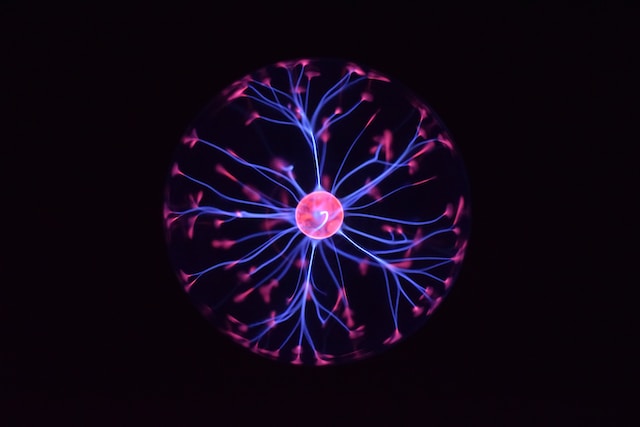Cryonics is the process of freezing a person upon their legal death, in a state of suspended animation. This is done in anticipation of advancements in medicine and technology which can enable those who are cryopreserved to be brought back to life. The sophistications surrounding the process has made it a curious subject for both fiction writers and filmmakers. Cryonics has been used in many movie plots since the start of the 20th century, and continues to make an appearance even now. Read on for some of the popular and interesting fictional representations of cryonics.
Disclaimer: Spoilers ahead!
Cryosleep and space sci-fi
Cryonics and space-travel have intersected many times in the world of sci-fi movies. Some of these use the fundamentals behind cryonics as a means to assist them in space-travel. This can be seen in some of the popular movie plots like 2001: A Space Odyssey (1968), Alien (1979), Interstellar (2014) and Passengers (2016). The common theme appearing in all these is “cryo-sleep” or “hyper-sleep”, with its own variations. Alien makes use of it through a Hypersleep Chamber, in which a person is cryogenically frozen, thereby enabling them to survive the extremely lengthy trips in space.
Interstellar on the other hand takes a different approach to cryosleep, with the use of Hypersleep Pods. These are large, coffin-like boxes, the insides of which are filled with some water-like liquid, which is then heated by an unknown power source. An individual can lay down in it with the help of a metal skeleton bed, which is lowered into the liquid. The purpose of this is to slow the ageing of the human body and facilitate space travel with minimum disruptions.

Passengers (2016) also used cryosleep as a means for lengthy space travel. In the movie, the character played by Chris Pratt is prematurely awoken from his cryosleep with around 89 years of space travel ahead of him. The story then deviates from cryonics and follows with him waking up another “sleeper” after suffering from lack of human interaction, and trying to ultimately fix the ship from breaking down.
Oxygen (2021) is the latest sci-fi movie touching the peripherals of cryonics. Here, a woman wakes up in a “Cryosalide”, which is a cryonics pod, and discovers that the oxygen level inside the pod is running out. She is helped by an AI named MILO, who addresses her as Omicron 276. Unlike other cryonics-related movies, the character doesn’t appear to be frozen, but connected to the systems inside the pod with a lot of wires. The movie revolves around her attempts to escape the pod by discovering her identity and getting certain access codes. Ultimately, she finds out that she is a clone from earth, and was in cryosleep for 12 years. She is one amongst a hundred other clones who were on space travel to seed the human race in another world, as the earth was being ravaged by the pandemic.
Revival plots
Buck Rogers in the 25th Century is a 1979 film where Buck Rogers, a character that gained popularity through comic strips, is frozen in suspended animation after a comet catches his space shuttle. He is revived 500 years later and brought back to earth where all civilisation lives in a domed city amidst post-holocaust ruins.
An interesting take on the use of cryonics has been explored in Demolition Man (1993). This movie portrays a “society of perfect order”, where smoking, meat-eating and swearing are made unlawful. More interestingly, criminals are “cryo-sentenced”, i.e. they are put into cryosleep, during which their criminal intents are reprogrammed, removing all deviant behaviour. However, the escape of an infamous convict necessitates the release of John Spartan, aka the Demolition Man, who was a police sergeant cryo-sentenced for negligence of duty.
Another reference to a crude form of suspended animation can be seen in Captain America: The First Avenger, where Steve Rogers, aka Captain America, is frozen after crashing a jet into ice, waking up 70 years later. His time in ice was later scientifically explained by Marvel, a process which revealed the presence of some cryonics – he was able to survive so many decades in ice due to his super soldier serum, which prevented his blood’s water from being frozen, creating a natural ‘cryoprotectant’. This prevented Rogers from dying in ice.
Forever Young (1992) movie revolves around the life of a US Navy Officer, Daniel McCormick, who, with the help of his scientist-friend, gets “frozen” in 1937. The catalyst to all of this is the comatose state which the love of his life goes into following a car accident. Finding no will to live through her coma, the protagonist, Daniel, asks his friend, who has successfully brought a chicken back to life after freezing it, to freeze him. Here, the plot deviates from the current cryonics practice of cryopreserving someone only upon their legal death. Although Daniel gave instructions to be frozen for a year, the capsule in which he is stored goes unnoticed for over 50 years, until 1992. His thawing is “accidentally” carried out by two young boys who are playing around in the facility where the capsule is. Although the capsule in which he is frozen is shown to be sophisticated, the process of thawing him out is yet again inconsistent with the complexities surrounding it.
Daniel is surprisingly intact when he is thawed out, with no apparent injuries from the freezing, and appears to be in prime physical condition. His memories are also intact, and the mother of the boy responsible for his thawing helps him to reintegrate into society after jumping over 50 years in time, far from the life he once knew. However, he begins to experience certain side-effects from being frozen, and the lost age starts catching up rapidly. He also learns that the love of his life is still alive and out of the coma, while the FBI tries to detain him in order to inquire into the experiment.
In line with its time, Forever Young does not go too far into the sophistications and intricacies of cryopreservation. It appears to be oversimplified as an experiment or a project which can be carried out on any willing human-being.

Vanilla Sky (2001), a remake of the original Spanish movie Open Your Eyes (1997), presents yet another interesting fictional take on cryonics. David, after encountering a series of disturbing events in his life, decides to end it through Lucid Dream. This is an endless state of dream in which a person is put in, where their memories are replaced with alternate ones picked by the person. This is conducted by an organisation called Life Extension, which also undertakes freezing and preserving of bodies soon after death.
While in Lucid Dream, he begins dreaming of an alternative reality, which is nothing but the dream, however, there are many glitches in the dream which trigger his subconscious towards the actual reality. He ends his alternative reality life by jumping off a tall building and wakes up from the Lucid Dream 150 years later.
Realive (2016) takes an interesting look at reanimation after death through the resurrection of the main character, Marc Jarvis. After being diagnosed with terminal cancer, Marc Jarvis, an artist, signs up to be cryopreserved, and becomes the first person to be successfully brought back to life in the year 2084. The director himself revealed that the movie is more about life after death than cryonics itself, noting that the latter is only a means for the former.
Most of his organs, except the brain, have been cloned, and Marc undergoes months of rehabilitation to function as a normal human being. However, things are not as great as one would want them to be, considering he is getting a second shot at life. Marc suffers with old-age ailments after being revived and is also connected to a machine which helps keep him alive. Marc cannot seem to remember much about his initial life, which leads to him being given a “memory device” which enables him to see the memories of his initial life in great detail. This is accompanied by the empty feeling of waking up into a world where all those known to him are no more. The movie shows him spiral into depression when he is presented with a box of memorabilia from his earlier life, which includes a letter from his loved one.
While the movie is an attempt at a supposition of life upon scientific revival, it deviates into certain dramatic aspects, with Marc coming across tapes of unsuccessful resurrections and not wanting his loved one, who is also preserved, to undergo such difficulties. He also faces a certain degree of abuse from the doctors who worked on his resurrection. All this ultimately leads to him wanting to end this new life.

Cryonics in TV shows
Futurama, a popular animated TV series, bases its whole plot on the main character, Philip J. Fry, accidentally tumbling into a cryonics chamber while delivering pizza on New Year’s eve 1999. He wakes up a thousand years later into a sophisticated future.
Cryonics also makes an appearance in the TV Show Castle, Season 4, Episode 3 “Head Case” where the trail to a life extension facility begins in a crime scene with no victim. The facility is shown as a warehouse, storing large metal cylinders with people cryogenically frozen inside them. These “cylinders” quite nearly resemble the ones used in reality, except for being much shorter, and having a glass panel through which the face can be seen. The victim is revealed to be a scientist who was experimenting with cryonics and life extension; his dead body was taken away from the crime scene by employees of the facility who were alerted of his death by a watch on the scientist, and as he was a client, they had made the decision to cryopreserve the body instead of handing it over to the police.
This episode appears to come as close as possible to the fundamentals of cryonics in the real world as it uses the alert system, the cylinders, or dewars as they are referred to, and the importance of taking custody of a “client’s” body immediately after legal death.
All in all
As one can see, cryonics has intrigued many filmmakers to incorporate it into their movie plots. Although most of these are entirely fictional and do not materially replicate the cryonics technology in real life, they acknowledge its existence. Discussions of these plots take place in different fora, spreading awareness about the subject.















